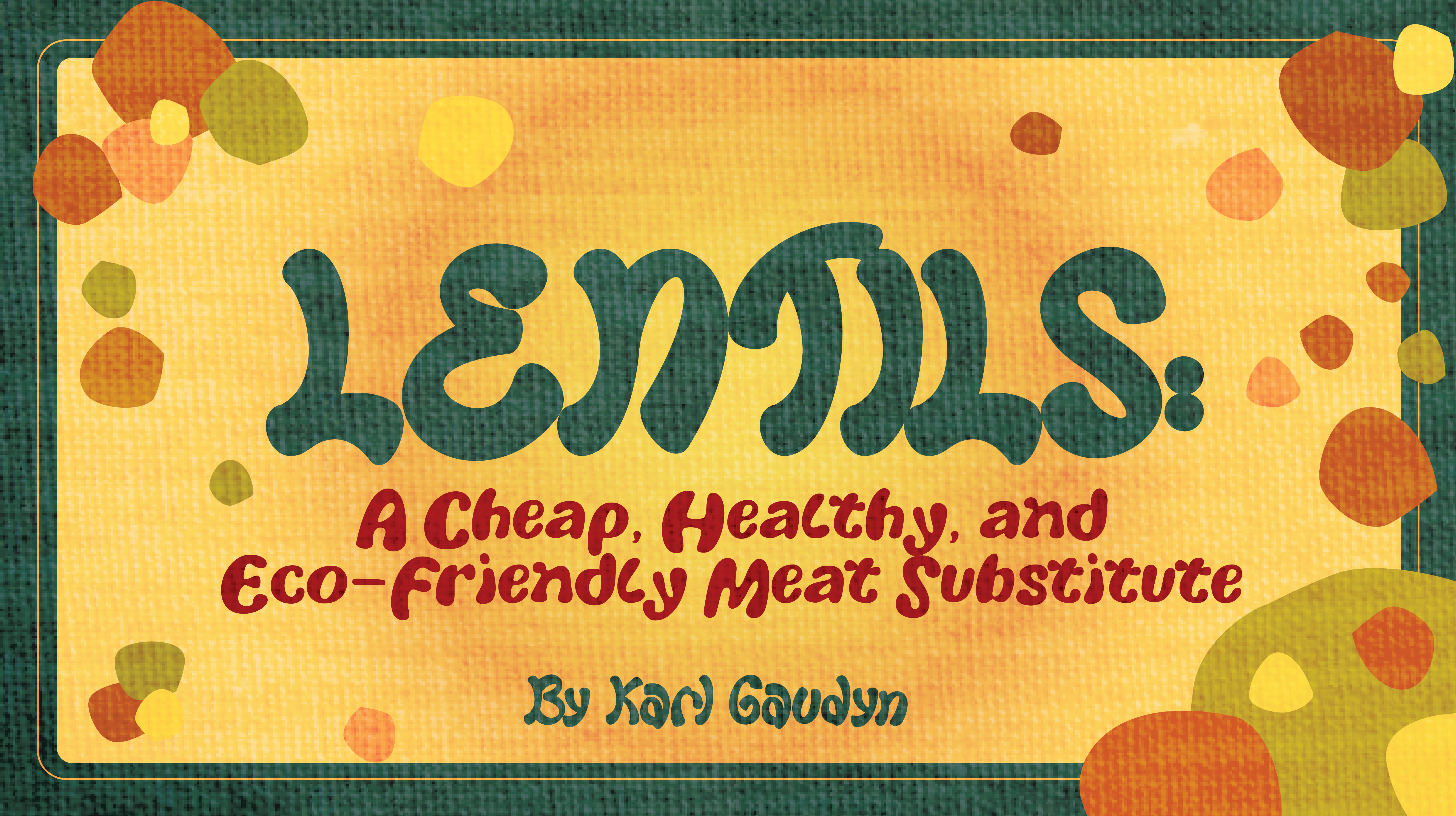By Karl Gaudyn
Feature Image Design by Jade Phan.
Ten years ago when a friend brought me to an Ethiopian restaurant, I tried lentils for the first time and have been hooked ever since. Growing up in a Polish family where dinner usually meant a serving of pork with sides of beef and potatoes — all doused in a heavy gravy — I had never even heard of lentils. While I still occasionally get a hankering for sausage and sauerkraut, I’m glad that as an adult I usually opt for this staple of Indian, Ethiopian, and Mediterranean cuisines.
Apart from their delicious taste, lentils are a great meat substitute. If you’re worried about cow methane fueling destructive climate change, hormones and preservatives added to meats, or just looking for an all-around healthier and more affordable alternative, then you should give lentils a try. While a couple of cups of lentils will give you all the protein you need, you’ll also get plenty of fiber and potassium, without any cholesterol, sodium, or even fat. Additionally, dry, uncooked, properly stored lentils have an extremely long shelf life.

Red, yellow, and green, you can experiment with all the different kinds. I love making a green lentil soup with onions, garlic, olive oil, and vinegar (yes, it’s basically that easy), but probably my favorite form of lentils is panchratan dal with rice. When I’m looking for a protein boost after going to the gym, I no longer cook up meat. Instead, I boil up some lentils in water and vegetable stock (again, it’s that easy), and experiment with some of my favorite spices. By now, I’ve found enough recipes and have tried enough on my own that I’ve replaced meat entirely for several meals a week, and I even add leftovers to salads for lunch.
Chickpeas in their various forms — from hummus, to falafel, to just plain old cooked chickpeas with different spices — have already become a big hit in the US, serving as the basis for healthier alternatives to most chip-dips, meats, and as popular additions to salads. These are also staples of the cuisines where lentils are most often used. In fact, you can think of lentils as the less fatty cousins of chickpeas. They’re just as versatile and even more delicious.
The US is already the fifth-highest producer of lentils worldwide. Now it’s time to skip over those foods full of salt, fat, and all sorts of carcinogenic preservatives, and make us one of the highest consumers! Next time you’re thinking of grilling up a steak or bringing something over for a potluck, look up a recipe for a Greek green lentil soup or some Ethiopian Yemisir Kik Wot. Your body will thank you and your friends will ask you for the recipe!

Leave a Reply
You must be logged in to post a comment.